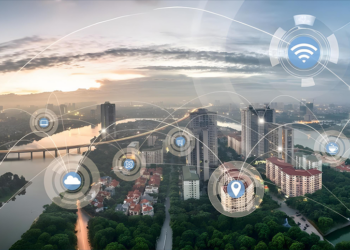Innovation is not just about new technology or gadgets; it is about rethinking how we address fundamental issues and using creative, effective, and sustainable solutions to improve the world. Social, technological, and environmental innovations are at the forefront of addressing the most significant challenges facing humanity.
This article explores how innovation is playing a pivotal role in solving global crises, highlights the most significant areas of impact, and outlines the potential for further innovation in future problem-solving.
A. Understanding Global Crises and Their Complexity
A global crisis is an event or situation that poses a significant threat to the well-being of society, the environment, or the global economy. These crises often require coordinated international efforts and innovative approaches to mitigate their effects.
1. Climate Change
The ongoing climate crisis is one of the most pressing issues humanity faces today. Rising global temperatures, extreme weather patterns, and sea-level rise threaten not only ecosystems but also human livelihoods.
Climate change has been linked to devastating droughts, floods, wildfires, and storms, all of which result in loss of life, displacement, and economic damage. Addressing climate change requires a radical shift in how we produce and consume energy, as well as how we manage natural resources.
2. Pandemics and Global Health
The COVID-19 pandemic was a stark reminder of the vulnerabilities in global health systems. It disrupted economies, strained healthcare infrastructure, and resulted in millions of deaths worldwide. But the crisis also demonstrated the power of innovation in developing vaccines at unprecedented speeds and adapting healthcare systems to a rapidly changing environment.
Pandemics highlight the importance of strengthening healthcare infrastructure, improving access to healthcare, and increasing the global capacity to respond quickly to future health threats.
3. Economic Inequality and Poverty
Economic inequality remains a global issue, with billions of people around the world living in extreme poverty. The gap between the rich and the poor continues to grow, perpetuating cycles of poverty and limiting access to basic services like education, healthcare, and housing.
Innovation in economic models, including microfinance, digital banking, and social entrepreneurship, is crucial in empowering individuals and communities to lift themselves out of poverty and achieve greater economic stability.
4. Social and Political Instability
Political instability, social unrest, and conflict are prevalent in many parts of the world. These crises often arise from deep-seated inequalities, corruption, lack of access to justice, and limited economic opportunities.
Innovative approaches in peacebuilding, conflict resolution, and governance reforms can help address the root causes of instability, promoting peace and democracy in regions affected by conflict.
B. How Innovation Can Address Global Crises
Innovation plays a critical role in addressing global crises, not just by providing new tools or technologies, but by fundamentally changing the way we approach problems. Here are several areas where innovation has already begun to make an impact:
1. Technological Innovation in Climate Action
Technology has the potential to revolutionize our efforts to combat climate change. Renewable energy technologies, such as solar, wind, and geothermal, are becoming more cost-effective and scalable, providing sustainable alternatives to fossil fuels.
A. Clean Energy Solutions
The development and deployment of renewable energy solutions, including solar panels, wind turbines, and energy storage systems, are key to reducing carbon emissions. These technologies not only address the environmental impact of traditional energy sources but also create new industries and jobs.
B. Carbon Capture and Storage
Innovative carbon capture and storage (CCS) technologies are being developed to remove carbon dioxide from the atmosphere and store it underground. This technology could play a significant role in achieving net-zero emissions and mitigating the effects of climate change.
C. Sustainable Agriculture
Agricultural innovation, such as precision farming, vertical farming, and genetically modified crops, is improving food security while reducing environmental impact. These innovations help increase crop yields, use fewer resources, and lower greenhouse gas emissions associated with farming.
2. Health Innovations in the Face of Pandemics
The COVID-19 pandemic demonstrated how innovation could rapidly accelerate the development of life-saving solutions. Innovations in vaccines, diagnostics, and treatment options helped mitigate the spread of the virus and save lives.
A. Vaccine Development
The rapid development of COVID-19 vaccines using mRNA technology was a groundbreaking achievement in the field of medicine. This technology has the potential to revolutionize the treatment of other diseases, including cancer, by creating vaccines that target specific genetic markers.
B. Telemedicine
Telemedicine has become a lifeline during the pandemic, allowing healthcare professionals to provide remote consultations and monitor patients from afar. This innovation has expanded healthcare access, particularly in rural and underserved areas, and it is likely to remain a key component of the healthcare system going forward.
C. Health Data Analytics
The use of big data and artificial intelligence (AI) in healthcare is revolutionizing disease prevention, diagnosis, and treatment. AI-driven algorithms can analyze vast amounts of health data to identify patterns, predict outbreaks, and personalize treatment plans, improving overall health outcomes.
3. Economic Innovation for Poverty Reduction
Innovative business models are playing an essential role in reducing poverty and promoting economic inclusion. Social entrepreneurship, microfinance, and digital banking are opening new opportunities for individuals in low-income communities to access financial services and start businesses.
A. Microfinance and Digital Banking
Microfinance institutions provide small loans to people who do not have access to traditional banking services. Digital banking solutions, such as mobile payment platforms, are helping individuals in developing countries gain financial inclusion, empowering them to save, invest, and access credit.
B. Social Entrepreneurship
Social entrepreneurs are using innovative business models to address social issues, such as access to education, clean water, and affordable healthcare. These businesses aim to achieve social impact while maintaining financial sustainability, offering scalable solutions to poverty and inequality.
C. Job Creation through Innovation
Technological advancements, such as automation and artificial intelligence, have the potential to create new jobs in emerging sectors like renewable energy, healthcare, and technology. Preparing workers for these new industries through education and training is key to ensuring that innovation drives inclusive economic growth.
4. Innovation in Governance and Social Stability
Innovative approaches to governance and public administration are helping promote transparency, accountability, and justice in many regions affected by political instability and corruption.
A. Blockchain for Transparency
Blockchain technology has the potential to revolutionize how governments handle public records, financial transactions, and voting systems. Its decentralized and transparent nature can reduce corruption, improve efficiency, and increase trust in government institutions.
B. Digital Democracy
Digital democracy tools, such as e-voting platforms, online petitions, and civic engagement apps, are enabling citizens to participate more directly in the political process. These innovations are empowering people to hold their governments accountable and contribute to the decision-making process.
C. Peacebuilding and Conflict Resolution
Innovative approaches to conflict resolution, such as digital diplomacy, citizen-led peace initiatives, and technology-enabled mediation platforms, are helping resolve disputes and promote peace in conflict zones. These innovations create new pathways for dialogue and understanding, fostering more peaceful societies.
C. The Challenges and Limitations of Innovation
While innovation holds tremendous potential to address global crises, it is not without its challenges and limitations. Not every innovation will have the desired impact, and some may even exacerbate existing problems.
1. Access and Inequality
One of the biggest challenges is ensuring that the benefits of innovation are accessible to everyone, particularly those in underserved or vulnerable communities. Without proper access to technology, education, and resources, the gap between the rich and poor could widen, leaving many behind.
2. Political and Regulatory Barriers
Innovation often faces resistance from political leaders and regulatory bodies that may be slow to adapt to new technologies or approaches. Overcoming bureaucratic hurdles and gaining acceptance for new ideas can be a significant challenge, especially when dealing with issues like healthcare, education, or environmental regulation.
3. Ethical Concerns
As innovation advances, ethical concerns also arise. For example, the use of artificial intelligence and big data in healthcare and governance raises questions about privacy, security, and the potential for bias in decision-making. It is essential to ensure that these innovations are developed and implemented responsibly.
D. The Future of Innovation in Solving Global Crises
The future of innovation looks promising, with technology and creativity poised to play a crucial role in addressing global crises. However, solving these crises will require a coordinated effort from governments, businesses, non-profit organizations, and individuals.
To create lasting change, innovation must be aligned with sustainable development goals, ethical principles, and inclusivity. By fostering collaboration, investing in research and development, and ensuring equitable access to innovations, we can create a more resilient and sustainable future for all.
Innovation is a powerful tool for addressing the world’s most pressing crises. Whether it’s tackling climate change, improving healthcare, reducing poverty, or promoting social stability, innovative solutions have the potential to create lasting change. As we face new and evolving challenges, it is essential to embrace innovation and work together to build a better, more sustainable future.
By investing in creativity, technology, and forward-thinking solutions, we can rise above the challenges that lie ahead and create a world that is more equitable, prosperous, and resilient for future generations.















